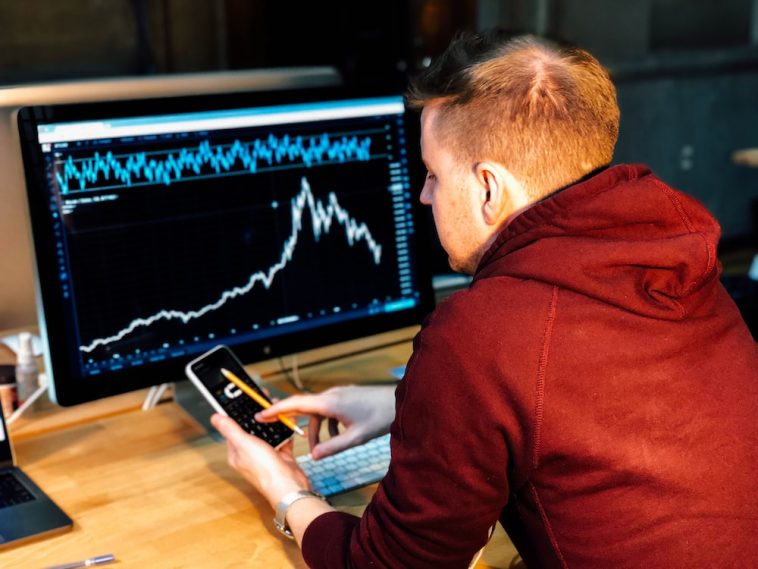Introduction.
Managing your money is one of the most important parts of trading forex. While many traders focus on strategies for entering the market, understanding how to withdraw your earnings is just as critical. After all, what’s the point of trading if you can’t access your hard-earned profits?
If you’re feeling a little unsure about how to go about it, you’re not alone. Withdrawing money from a forex trading account can seem complicated, especially for beginners.
There are a few steps, rules, and things to keep in mind, but don’t worry—I’m here to break it all down so you can confidently withdraw your funds.
Understanding How Forex Withdrawals Work
When you trade forex, you’re dealing with brokers who hold your funds. These brokers often provide multiple options to deposit money into your account and withdraw it later.
But these options can vary depending on the broker you choose and the country you’re operating in.
Here’s the thing: each broker has its process, so the withdrawal experience won’t be the same for everyone. Common withdrawal methods include:
- Bank Transfers: Reliable but might take a few days.
- Credit or Debit Cards: Quick but often have limits.
- E-Wallets (e.g., PayPal, Skrill): Fast and convenient.
- Crypto Transfers: Becoming more popular among certain traders.
It’s important to understand the options available to you and any associated fees or waiting periods.
How Do I Withdraw from My Forex Account?
Here’s a simple guide to help you withdraw your funds:
1. Check the Withdrawal Policy
Before you start, it’s a good idea to read your broker’s withdrawal policy. Some brokers might have minimum withdrawal amounts, while others could charge fees for certain methods. This information is usually available on their website.
2. Verify Your Account
Most brokers require account verification before allowing withdrawals. This step ensures your account isn’t being accessed by someone else. You might need to provide:
- A government-issued ID (passport, driver’s license, etc.)
- Proof of address (utility bill, bank statement, etc.)
- Sometimes, additional documents, depending on the broker.
3. Log Into Your Trading Platform
Go to the broker’s platform or website and find the section for account management or withdrawals. Most platforms have a straightforward layout where you can easily locate the withdrawal feature.
4. Select Your Withdrawal Method
Choose how you’d like to receive your funds. Remember that:
- Some methods, like e-wallets, might process faster than bank transfers.
- Certain options might come with higher fees.
5. Enter the Withdrawal Amount
Be careful here. Double-check how much you’re withdrawing and make sure you meet the minimum withdrawal limit (if any).
6. Submit Your Request
Once you’ve filled out the required details, submit your withdrawal request. You’ll usually receive a confirmation email or notification.
Depending on the broker, the funds could take anywhere from a few hours to several business days to reach you.
Things to Keep in Mind
1. Withdrawal Fees
Almost all brokers charge fees for certain withdrawal methods. These fees vary, so always check before deciding how to withdraw your money. For instance:
- E-wallets might charge around 2–5% per transaction.
- Bank transfers could have a flat fee of $20–50.
- Some brokers offer free withdrawals but only a limited number per month.
2. Processing Times
Different withdrawal methods come with different processing times. E-wallets like Skrill or PayPal are usually faster, while bank transfers can take up to 5 business days. Always factor this into your plans.
3. Currency Conversion Fees
If your trading account is in a different currency than your withdrawal account, you might face conversion fees. For example, withdrawing from a USD forex account to a EUR bank account could result in an extra cost for converting dollars to euros.
4. Regulatory Requirements
Certain countries require brokers to comply with strict anti-money laundering (AML) and know-your-customer (KYC) regulations. This means you might need to provide additional documentation or follow specific steps during the withdrawal process.
5. Account Balance
Remember that you can only withdraw available funds. If you’ve recently placed a trade, the margin tied up in that trade can’t be withdrawn until the position is closed.
FAQs
How long does a withdrawal take?
The processing time depends on your withdrawal method. E-wallets can take a few hours to a day, while bank transfers might take 3–5 business days.
Why do brokers require verification for withdrawals?
Verification helps ensure your money isn’t withdrawn by someone else. It’s a security measure to protect your funds.
Are there any hidden charges when withdrawing money?
Always check the broker’s fee structure. Some brokers advertise “no fees” but may have hidden costs like conversion charges or processing fees for certain methods.
Can I withdraw bonus funds?
Most brokers don’t allow you to withdraw bonuses unless specific conditions are met. These conditions are usually outlined in the broker’s terms and conditions.
What happens if my withdrawal is delayed?
Delays can happen due to incomplete documentation, high demand, or technical issues. Contact your broker’s customer support if you experience significant delays.
Wrapping It Up
Withdrawing money from your forex trading account doesn’t have to be stressful. By following the steps outlined here, you can access your profits without unnecessary hassle.
Make sure to familiarize yourself with your broker’s policies, fees, and withdrawal methods to avoid surprises.
I’d love to hear your thoughts on this topic. What’s your preferred withdrawal method, and have you had any challenges withdrawing funds from your forex account? Let me know!





GIPHY App Key not set. Please check settings